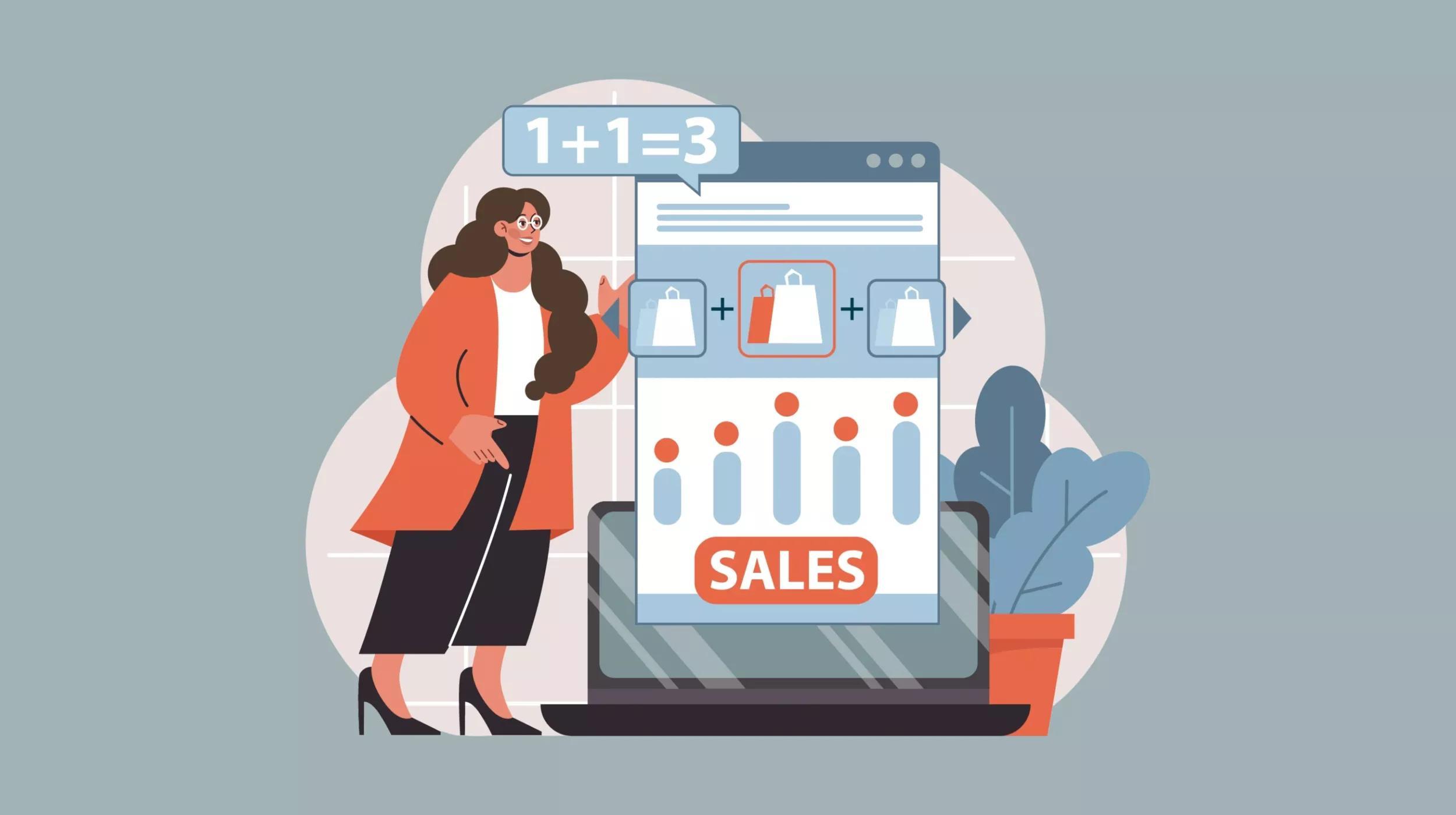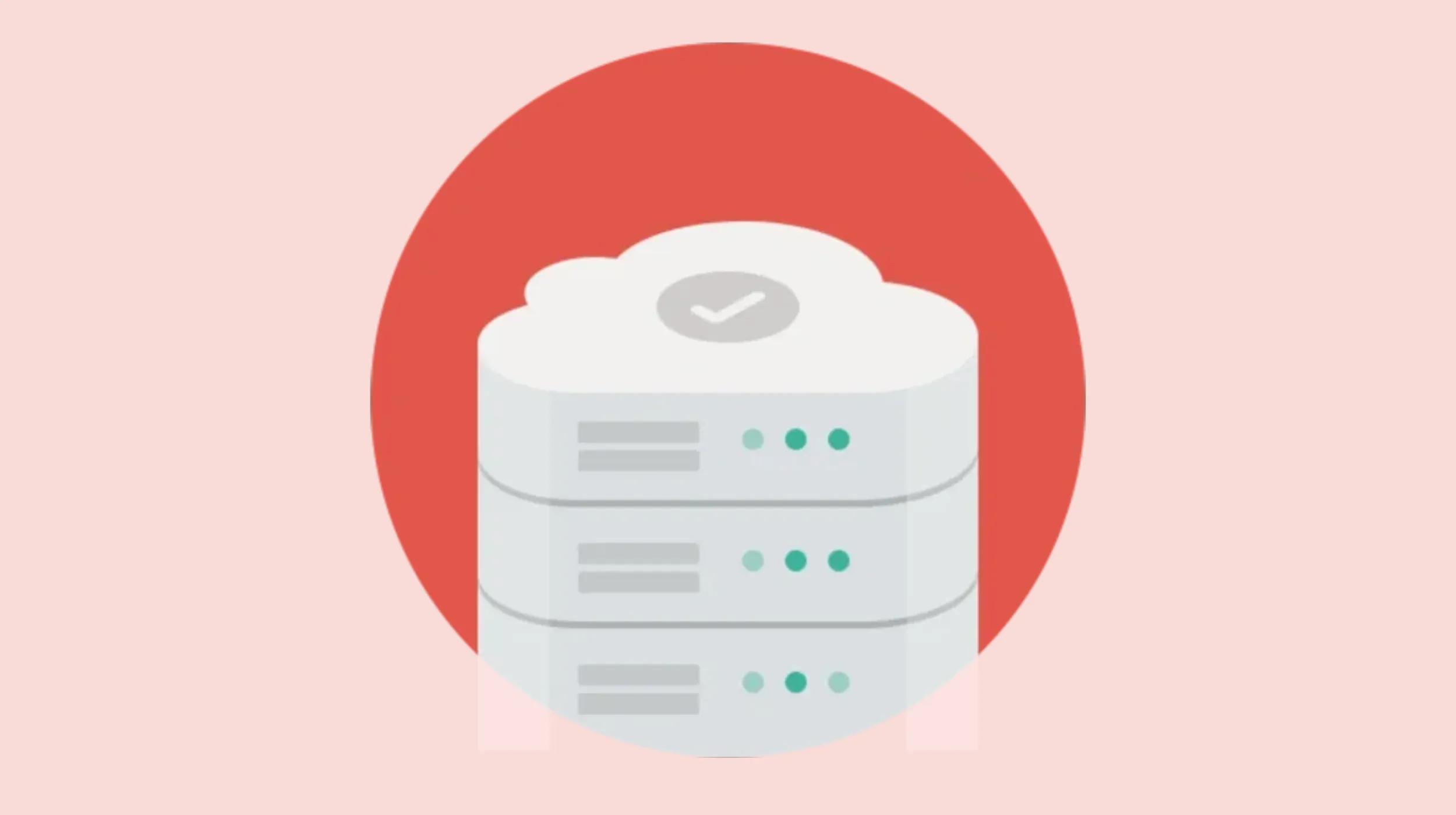Amazon is one of the most trusted brands in the US, with more than 60% of sales in the Amazon store coming from independent sellers. In previous years, US-based sellers sold more than 4.5 billion items—an average of 8,600 items every minute.
But, the moment you sign up as an Amazon seller, the clock starts ticking.
Indeed, Amazon will hold you to its monthly performance metrics from day one. As such, being prepared for how to sell on Amazon makes all the difference.
Thus, being prepared for selling on Amazon makes all the difference. With our five-step checklist, you’ll be ready to excel at every stage of selling on Amazon. We’ve covered everything from basic preparation to the next steps necessary for growth and success.
Are you ready to start selling? Let’s dive in.

Go from idea to online in minutes with GoDaddy Airo™
Get started now.
1. Conduct market and product research
Your marketing and product research efforts form the foundation of your ongoing Amazon sales strategy, so you shouldn’t overlook this phase.
In addition to knowing which types of products and categories are most popular with consumers in your niche, you will also gain a firm grasp of Amazon’s various seller fees. Your fees will vary depending on the seller plan you choose and the type and volume of products you offer.
Here are the main fees for each plan to be aware of.
| Feature | Individual Plan | Professional Plan |
| Subscription Fee | $0.99 per item sold | $39.99 per month |
| Seller University Access | ✔ | ✔ |
| Seller Support | ✔ | ✔ |
| List Products | One at a time | In bulk |
| Manage Inventory | One product at a time | In bulk |
| Pricing | Static | Static and Dynamic |
| Promotions and Coupons | ✖ | ✔ |
| Featured Offer Competition | ✖ | ✔ |
| B2B Tools | ✖ | ✔ |
| Access to Optional Programs | Limited | Full |
Optional programs involve additional costs, such as Fulfillment by Amazon, Amazon Ads, and more.
Once you understand your seller fees, focus on these key steps for comprehensive market and consumer research.
Find a product niche
Finding the right product niche helps you develop your brand while allowing you to tap into a specific vertical and own it. Rather than being a `one-stop shop,` focusing on a specific niche gives your selling efforts a clear direction, builds trust, and connects you with a higher number of engaged customers (which means more sales).
Picking a niche with an active market that aligns with your personal interests or expertise will provides you with the authority to boost brand awareness and the passion needed to succeed in a competitive marketplace.
Choose evergreen products and encourage repeat purchases
Selecting evergreen products—items that have consistent demand throughout the year—ensures sustained sales and helps maintain a stable revenue stream. *
Additionally, focusing on products that encourage repeat purchases, such as consumables or items that require regular replacement, fosters customer loyalty and increases lifetime value.
By offering products that customers need to buy repeatedly, you create ongoing sales opportunities and build a loyal customer base. To further ensure consistent demand, consider using tools like Google Trends to assess the seasonality of your products, helping you to identify and plan for any fluctuations in demand throughout the year.
Look for a unique product (or one that aligns with your interests)
New sellers often enter markets with products that are already highly popular and crowded, reducing the chance of successful sales. Ensure that you’re selling something with a viable business opportunity.
For the best results in product selection, identify trending products and explore gaps in the market. For example, if car cams are trending, delve deeper to learn which styles, brands, and sizes are in highest demand to refine your potential range. Remember that digital products like eBooks and music are also worth exploring alongside physical products.
The biggest competitor on Amazon is Amazon itself—check your intended catalog against Amazon, and if the company is already selling your products, rethink your approach.
Learn about restricted or gated products
Understanding restricted or gated products is essential for selling on Amazon with confidence. It’s important to note that:
- Some categories are open to all sellers.
- Some require a Professional Seller account.
- Some require approval to sell.
- Some include products that cannot be sold by third-party sellers.
From alcohol to laser-based items, numerous products come with stringent restrictions. Here are some of the main products restricted on the platform for third-party sellers:
- Items containing regulated composite wood that doesn’t comply with EPA formaldehyde emissions standards.
- Ammunition or assault weapons.
- Items or products that have been previously recalled.
- Surveillance-based equipment used for pursuits like bugging or wiretapping.
To determine which items you can sell in your niche, check out Amazon’s official restricted product list. Review the list, consider what you are selling, and ensure you have the appropriate account.
Ask for samples
Requesting samples of any product you’re considering selling on Amazon is a smart move.
Some suppliers may provide free samples to encourage your business, while others may charge a nominal fee. Regardless of the approach, this can result in a positive return on investment by providing valuable insights into the quality and suitability of your inventory, helping to maintain your brand reputation.
Run a competitor analysis
Once you’ve selected your niche and are ready to source and sell the products your target customers want, conduct competitor research. Understanding what and how your competitors are selling their products on the platform will help you identify gaps in the market.
Improving upon your competitors’ efforts will give you a brand-boosting edge and help you establish your unique selling points (USPs).
To ensure your listings can compete effectively against competitors’ listings on Amazon, consider the following factors:
- Price: Keep your listings’ prices at or lower than competitors’. Shoppers seek the best deals, and a competitive price increases your chances of winning the Buy Box, as Amazon prioritizes price when choosing the Buy Box winner.
- Images: High-quality images can be very persuasive in encouraging purchases. Ensure your listing has more images with higher quality than competing items.
- Text: If your listing isn’t ranking high for your product keywords, it might be because the listing text isn’t relevant to Amazon’s search engine. Analyze the text of the current top-ranking listings for relevant keywords you can include to boost your product.
- Number of Sellers: More than 60% of sales in the Amazon store come from independent sellers, indicating a competitive and dynamic marketplace. Understanding the proportion of independent vs. Amazon-controlled listings can help identify competitive dynamics and potential niches.
Enhancing your listing to outshine competitors’ items on Amazon will increase your product’s rank in the marketplace’s search results.
Selecting lightweight and non-fragile products can further enhance your profitability by minimizing shipping and storage costs. Lightweight items reduce shipping expenses, while non-fragile products decrease the likelihood of damage during transit, leading to fewer returns and higher customer satisfaction.
Explore additional marketplaces
To identify trending products that could perform well on Amazon, consider exploring additional marketplaces like eBay and Walmart. These platforms can provide valuable insights into consumer preferences and emerging trends.
By analyzing top-selling items and customer reviews on eBay and Walmart, you can spot patterns and identify products with high demand potential on Amazon. This cross-marketplace research helps you make informed decisions about which products to list, ensuring they align with current market trends and customer needs.
2. Prepare your business plan
Before proceeding, an essential piece of advice: decide on your business plan in advance. Don’t try to wing it.
Take the time to establish a solid business plan, providing a clear roadmap for running and developing your business over time. Naturally, your business plan will evolve as your Amazon store grows, but having a firm framework in place will lay solid foundations for success.
When writing your business plan, focus on these key points:
- Explain why you’re in business and what you’re trying to sell.
- Describe inventory management, fulfillment, and logistics.
- Define milestones and goals.
- Outline financials: fees, costs, advertising.
Explain why you’re in business and what you’re trying to sell
Effectively selling on Amazon isn’t just about listing products and hoping for the best—you need to clearly define why you’re in business and what you’re selling. While you may have a decent idea of what you want to sell at this stage, a detailed business plan will provide greater focus, help you stay on track, and keep you accountable for your actions.
Key concepts for defining your Amazon selling business rationale include:
Determine your inventory scope
Decide whether you’re going to sell the same products consistently or periodically change your inventory. If you plan to sell the same products over time, take advantage of Seller Central’s replenishment alerts to prevent running out of main items. Managing your inventory scope with precision involves creating a timeline.
For example, commit to selling a range of 12 items in the first six months, then double your range after the first year. Setting benchmarks like these ensures steady scaling without overextending your resources.
Define your value proposition to customers
Your value proposition communicates to customers exactly how your brand or product will benefit them and why they should choose you.
A strong value proposition keeps your Amazon efforts focused and provides your target audience with a clear reason to invest in what you offer. It involves outlining the promise you offer, detailing the exact benefits, and stating why you are better or more valuable than your competitors.
Outline or describe any intellectual property
When creating your business plan, outline any intellectual property (IP) rights related to the products or services you plan to sell on Amazon. If you’re selling digital books or music, clearly define any IP you have in your inventory within your business plan.
Describe inventory management, fulfillment and logistics
Next, outline your inventory management, fulfillment, and logistics specifics. This is a crucial area of your business operation, so it requires due care and attention.
Decide how you will source your products
Consider how you’ll source your products. Inventory management is a major issue on Amazon, especially for sellers aspiring to win the Buy Box. To be eligible for the Buy Box, you need to maintain consistent stock levels.
Avoid periods when you’re out of stock to ensure continuous sales and revenue.
Identify the most appropriate inventory sources for your business and have fallback options to prevent stockouts.
Choose your fulfillment option
Choose one of Amazon’s fulfillment options. Here are the three main choices for Amazon sellers:
- FBA (Fulfillment By Amazon): Amazon handles the entire process from picking and packing to delivery. This model increases your chances of earning the Buy Box, but fees are slightly higher than other options.
- FBM (Fulfillment By Merchant): You handle the entire process, resulting in lower associated fees and more control, but with added responsibility.
- 3PL (Third Party Logistics): Outsourcing your fulfillment and logistics processes can reduce costs and streamline operations, but it’s important to evaluate options thoroughly before committing.
Make a plan for stale inventory
Regardless of your fulfillment method, tracking inventory age is crucial for managing your supply chain. If products sit unsold for three months, it indicates a need to adjust ordering.
For FBA users, identify stale inventory to avoid Amazon’s 180-day inventory sweeps and high storage fees.
Monitor your inventory using Amazon’s inventory report under Reports > Fulfillment > Manage FBA Inventory, which provides real-time data on SKU, product condition, and more.
Outline your returns process
Amazon has its own returns policy that you must meet or exceed as a seller. Review Amazon’s returns policy, decide on a process that matches or surpasses it, and document your returns process. Ensure you can handle returns promptly within the 24-hour window to maintain customer satisfaction.
Outline your financials
Detail your potential expenses, including platform fees, product costs, and advertising expenses.
Consider costs and set your price point
When setting prices, remain competitive by reviewing competitor pricing while ensuring enough margin for discounts or special offers. Consider key costs as an Amazon seller, including:
- Direct costs: Product procurement, SKU, and shipping fees.
- Indirect costs: Warehousing, bookkeeping, product samples, and marketing.
- Amazon fees: Sales commission, fulfillment fees, selling fees, FBA fees, commission on returned products and refunds, storage fees, return shipping or disposal costs, and FBA inbound shipping fees.
Aim for profit margins exceeding 20% or 25-35% after all costs to ensure product profitability.
Define milestones and goals
To ensure your business plan proceeds smoothly, set specific goals and milestones based on your desired outcomes.
Set deadlines
Note down deadlines for your business moving forward. This part of the process is vital for your ongoing success as it provides a definitive roadmap and allows you to benchmark your development over time.
Your deadlines will keep you on track and shape your business strategy. Examples include deadlines for sourcing inventory, setting up your online store, and launching your first marketing campaign.
Establish goals
With your deadlines and milestones in place, establish your key business goals. These goals will empower you to keep moving forward while holding you accountable for continual growth and success.
Examples include expanding your product range after 12 months, setting specific quarterly sales targets, or acquiring a certain number of repeat customers after the first 18 months. Ask yourself these questions and set realistic milestones you can work towards.
Determine a response plan
An essential aspect of knowing how to sell on Amazon is being able to respond to unexpected issues or continual change. Create a response plan that includes scenarios to address if your business isn’t hitting its goals. This will equip you to quickly identify the root of the issue and take action.
Here’s a checklist you can use as a guide:
- Are any of my products causing issues in terms of quality?
- Is my product content poor or misleading?
- Am I spending enough on advertising?
- Are my policies not clear enough?
- Have my competitors started doing something new that is attracting my customers?
3. Create your Amazon seller account
With your business plan in place, it’s time to set up your Amazon seller account. Follow each step carefully to ensure your account is operational and optimized for success.
Gather documents needed to open Amazon seller account
Start selling with your paperwork in order. Ensure you reside in an eligible country and gather the following items to create your Amazon seller account:
- Business email or Amazon customer account: Have a valid email address, preferably set up specifically for your Amazon seller account.
- Credit card: Use a credit card that can be charged internationally.
- Government ID: Necessary to verify your identity and protect both sellers and customers.
- Tax ID and information: Required for business or sole proprietor registration.
- Phone number
- Bank account: Must be able to receive proceeds from Amazon sales.
Enroll in Amazon brand registry and implement enhanced content
If you’re the rights owner for an eligible brand, enrolling in Amazon Brand Registry is recommended before listing your products. Brand Registry is free and provides sellers with additional selling benefits and protection tools.
Benefits of brand registry
- Greater control over the information on your product detail pages.
- Access to no-cost tools like A+ Content, Stores, Manage Your Experiments, and Brand Analytics, which can help you grow your audience and increase sales.
- Automated protections for your brand and access to additional reporting options.
Implementing enhanced content to boost sales
A+ content: Showcase your products and tell your brand’s story by adding video, enhanced images, product comparison charts, and other features to your product detail pages. Basic A+ Content can increase sales by up to 8%, and well-implemented Premium A+ Content can increase sales by up to 20%.
Shoppable videos: Inform and empower customer purchases by adding video to the main image block on your product detail pages. Videos can also help reduce customer returns. Detail page videos can help increase sales by up to 9.7% and reduce returns by more than 40%.
3D models and augmented reality: Provide an immersive shopping experience. Let customers view products from all angles with View in 3D or see them in their own space with View in Your Room. Offer Virtual Try-On for products like shoes and eyewear. On average, customers who viewed a listing with a 3D model were twice as likely to make a purchase after viewing the product in 3D or trying it on virtually.
These enhancements not only protect your brand but also significantly boost engagement and sales, making your listings stand out in the competitive Amazon marketplace.
Line up a tax adviser
If you’re planning to use Fulfillment by Amazon (FBA), there can be other tax issues. For a single seller with a single location, FBA tax is simple. But for a multi-locationstate entity, it can get complex.
If that’s you, it’s cheaper and simpler to talk to a specialist tax attorney or adviser before you start selling on Amazon, in the same way that it’s far cheaper to have a good accountant than muddle through it all yourself. (Small business owners know what I’m talking about here!)
Companies that specialize in Amazon tax issues include:
- Taxjar.com
- Avalara.com
- Taxify.co
- Vertexsmb.com
- FBAsalestax.com
- Zip-tax.com
- Catchingclouds.net
Disclaimer: This content should not be construed as legal or tax advice. Always consult an attorney or tax professional regarding your specific legal or tax situation.
Determine if you want to use a DBA name on your Amazon account
Amazon lets you use a DBA (doing business as) name on your Amazon account, basically rebranding your Amazon account as something different from your main business.
There are plenty of legitimate reasons to do this – such as, you have a specific part of your business that takes place on Amazon. If you normally sell furniture of every kind but on Amazon you sell only wardrobes, Texas Furniture isn’t as good a name as Texas Wardrobes, for instance.
But there are also plenty of sketchy sellers on Amazon who use DBA to conceal the real identity of their company; you might have more credibility and trust if you just use your regular business name.
Register your account
After gathering the necessary documents, visit Amazon Seller Central and click the sign-up button. Choose between two types of accounts:
- Individual seller account: No monthly fee, but a charge of 99 cents for each item you sell.
- Professional seller account: $39.99 per month regardless of the number of items sold.
If you plan to sell only a few items per month, opt for the individual seller account. For larger ventures, the Professional seller account is more suitable. Note that selling on Handmade or Launchpad requires a Professional seller account regardless of the number of products sold.
Remember, you can change plans at any time, either upgrading or downgrading as needed. For both account types, you can sign up with your existing customer account or create a new seller account with your business email. Amazon also collects a referral fee on each sale, which is a percentage of the total transaction and varies by product category.
4. Create detailed product listings
Great product listings are essential for achieving visibility on Amazon’s platform. Once logged in, navigate to Seller Central to create your listing. You’ll need:
- A product identifier: Such as GTIN, UPC, ISBN, or EAN to specify the exact item you’re selling. Obtain a UPC code from GS1 or request an exemption.
- A SKU: A product ID you create to track your own inventory.
- Details: Including the price, product condition, quantity available, and shipping options.
- Product details: Including name, brand, category, description, and images.
- Keywords and search terms.
If an exact product match exists on Amazon, you can match your listing using its existing product identifiers. If not, you’ll need to provide those details. Your offer details will appear on a product detail page where customers view your products on Amazon.
Here is what is included on this page:
- Title: 200 characters max, capitalize the first letter of every word.
- Images: 500 x 500 or 1,000 x 1,000 pixels to increase listing quality.
- Variations: In colors, sizes, etc.
- Bullet points: Short, descriptive sentences highlighting key features and benefits.
- Featured offer ("Buy Box"): The featured offer on a detail page. Customers can add to their cart or "Buy Now".
- Other offers: If multiple sellers offer the same product, you’ll see different prices, shipping options, etc.
- Description: Use keywords to help customers find your product.
Incorporate keywords in your product descriptions
When creating your product listings, consider how shoppers search for your products. Utilize key tools to identify the most frequently searched keywords by your shoppers.
- Google Keyword Planner: A free tool that indicates the monthly search volume of keywords on Google’s search engine. Since Amazon listings can rank on Google, this tool is especially helpful.
- Scope: A keyword tool specifically geared for Amazon, allowing you to track keywords’ monthly volume, ranking position over time, estimated sales, and more.
- Sellesta: An AI-powered keyword tool designed to help you discover a range of high-converting words for your Amazon seller account landing pages and product descriptions.
Once you’ve collected your keywords, incorporate them throughout your listing, such as in the title and description. By using these popular keywords, search engines will recognize your listing as relevant to buyers’ searches and rank it higher.
5. Manage and grow your store

To profit as a seller, you have to stand out against over two million merchants. But if you do grab buyers’ attention, you’re bound to make sales since so many shoppers flock to Amazon. The average conversion rate in the marketplace is roughly 15%, roughly three to five times that of other ecommerce sites.
The key to reaching Amazon shoppers is maximizing your listings’ visibility.
There are so many products on the marketplace, and buyers don’t have the time or patience to sift through every single one. Make it easy for buyers to find your products and you’re on track to win greater sales.
Boosting your listings’ visibility comes from both effective management of your store’s products and from smart product promotions. Keeping the below areas in mind will help your store to grow and flourish.
- Learn to use Amazon Seller platform and app
- Maintain strong product ratings
- Maintain strong shipping performance
- Monitor your seller rating
- Use internal Amazon Advertising channels or simply Amazon Advertising for your business
- Use external advertising channels
Learn to use Amazon Seller platform and app
Taking the time to get a firm handle on the Amazon Seller platform and app will give you the greatest chances of success. Once you’re 100% confident with all of the key functions and features, you will be able to shine your store as well as your products in their best possible light.
Work your way through the Vendor Central platform as well as the Seller app and learn how to:
- Track sales
- Fulfill orders
- Respond to questions
- Edit photos
- Source new products
- Access key seller’s analytics
Maintain strong product ratings
First impressions matter when you’re on a marketplace as competitive as Amazon. Buyers are browsing through thousands of products, so they won’t settle for items that seem low-quality.
A clear way to give shoppers a positive first impression of your Amazon listings is to maintain high-star ratings. When buyers are browsing through their Amazon search results, the star ratings are visible for each product.
Along with price, these star ratings are a major factor in whether shoppers decide to click on your listings. They can’t see your products in person, so this feedback from other buyers is especially meaningful to shoppers trying to make a purchase.
Here are a few tips for maintaining high-star ratings on all of your Amazon listings:
- Describe your item exactly as it is in your listing. False product details and images may boost sales initially, but ultimately they only hurt your Amazon business. Buyers who receive a product that’s totally different from the listing are bound to leave a low rating in disappointment.
- Provide excellent customer service. If you don’t handle customer requests properly, such as shipping the item late or not being prompt in completing a return, you’ll anger buyers. Avoid receiving a low product rating by delivering the item as expected and promptly resolving issues.
- Reach out to disappointed buyers. When a customer leaves a poor rating, reach out to the buyer to see if you can still resolve their issue. If you can fix their problem, they do have the power to edit their review and could adjust their rating to improve the product’s overall score.
Ratings are a key way for buyers to quickly assess your Amazon products. Make sure your items’ scores stay high to keep buyers interested in your listing.
Maintain strong shipping performance
Shipping, at first, might seem totally unrelated to promoting your products. But on Amazon, your shipping performance is a key factor in your listings’ visibility.
Amazon wants to keep shoppers happy, so they discourage poor shipping practices by making shipping a factor in winning the Buy Box and ranking high on Amazon’s search rankings.
With consistent shipping issues, you’re less likely to win the box or to rank high in search.
Instead of hurting your visibility, use these tips to maintain a strong shipping performance on Amazon:
- Regularly check your shipping performance metrics. In Amazon Seller Central, you can monitor several key shipping performance metrics — on-time delivery rate, valid tracking rate — to ensure that you’re consistently offering great shipping and pleasing customers.
- Use Amazon FBA. By signing up for Fulfillment by Amazon, sellers no longer have to worry about providing great shipping as the marketplace handles fulfilling your orders. If there are any complaints about your shipping from buyers, the marketplace will remove the rating since they are responsible for shipping issues.
- Use inventory management software. Adopting an inventory management program, like Sellbrite, keeps you on track so you can avoid understocking and being unable to complete orders. Sellbrite monitors when your stock is low across channels so you always know when to reorder.
Always provide great shipping and you won’t hurt your chance at winning the Buy Box or at ranking high in search results. With this visibility, Amazon shoppers can easily find your products.
Monitor your seller rating

Like shipping performance, your overall seller rating on Amazon also impacts your chances of winning the Buy Box and ranking high in Amazon’s search results.
Punishing low-rated sellers with less visibility is a measure to keep Amazon shoppers happy and sustain the marketplace. It ensures that buyers are first and foremost working with merchants who have a positive record and can provide great service.
To keep your listings visible on Amazon, follow these tips to maintain a high seller rating:
- Monitor your seller rating. On Seller Central, you can view the factors that contribute to your overall seller ratings — such as Perfect Order Percentage and Late Response Rate — and determine which ones need to be improved to increase it.
- Order Defect Rate (ODR): Keep your ODR below 1% by ensuring minimal negative feedback, chargebacks, and returns.
- Late Shipment Rate (LSR): Maintain an LSR below 4% by shipping orders on time.
- Pre-fulfillment Cancel Rate (CR): Keep your CR below 2.5% by managing inventory effectively and avoiding order cancellations.
- Valid Tracking Rate (VTR): Ensure your VTR is above 95% by providing valid tracking numbers for all seller-fulfilled orders.
- Be prompt in customer service. Set a daily reminder to resolve customer issues and respond to customer messages. The quicker you give buyers attention, the more impressed they’ll be with your service.
- Determine whether negative feedback could be removed. Amazon has clear guidelines for providing feedback. Review this post to determine whether any of your negative feedback from buyers should be removed.
Make an effort to keep your seller rating as high as possible and you’ll help your listings stay visible through the Buy Box and Amazon search results.
Launch a lightning deal
Beyond convenience, many shoppers come to Amazon for the marketplace’s low prices. With this interest, a primary way of attracting Amazon shoppers to your listing is by launching a Lightning Deal.
Lightning Deals are time-based, marked-down products that buyers can find in Amazon’s Today’s Deals section. They draw a lot of attention and sales from Amazon’s shoppers not only because they appreciate discounts, but also because their limited time frame motivates buyers to make a purchase.
Sellers have to pay a fee and Amazon has to approve Lightning Deals before they’re launched.
Here are a few of the key guidelines that sellers need to meet for their Lightning Deals to be approved:
- Lightning Deals run for four to twelve hours.
- Lightning Deals can only run once in a seven-day period.
- You should have your proposed quantity for the deal available at least seven days before the deal is expected to launch.
Use internal Amazon Advertising channels
When learning how to sell on Amazon, knowing which Amazon advertising channels are available at your fingertips will offer an excellent return on investment (ROI). The channels we’re going to explore here are either established or in beta mode. Either way, using these to your advantage is a good idea.
Even with SEO, there’s no guarantee that your listing will be placed higher in Amazon’s search results. The marketplace’s engine considers other factors for ranking — selling history, price, and more — so SEO alone doesn’t necessarily lead to higher rankings.
To gain more control over their listings’ visibility, Amazon sellers can pay for the marketplace to sponsor their products and place them higher in search results.
- Amazon Attribution (Beta): A savvy analytics tool that will tell you exactly how your non-Amazon tools are performing on the platform.
- Amazon DSP: A programmatic ad tool that will help you attract new customers from other channels or touchpoints and attract them to your Amazon store.
- Amazon Live: A smart content creation tool that will help you engage your target audience and make your brand stand out.
- Audio ads : A clever and easy to use advertising tool that will empower you to deliver inspiring audio ads to your customers at the right times in their shopping journey.
- Custom advertising solution: A cool custom ads creator that will give you the tools to reach your customers with eye-catching content at various stages of the marketing funnel.
- Sizmek Ad Suite: A dashboard platform that will empower you to track, manage, and measure your advertising efforts across multiple screens.
- Posts (Beta): A targeted ad solution that will help you serve your products or services on the platform with dazzling demonstrations and information.
- Sponsored Brands: An excellent awareness tool that will showcase your brand to customers with creative ads that appear in the shopping results.
- Sponsored Display: Another programmatic advertising tool that will empower you to serve sponsored ads for relevant platform searches.
- Sponsored Products: A cost-per-click (CPC)-based platform that will help you promote individual listings on Amazon and the best possible times.
- Stores: An intuitive online store builder with a range of tools and features that will help you create the best possible shopping experience for your customers.
- Video ads: A platform that gives you the tools to serve up engaging video ads across Amazon’s various channels and touchpoints.
Use external advertising channels
In addition to utilizing Amazon’s in-built advertising tools, using external platforms and innovations will help you entice plenty of business-boosting traffic from elsewhere on the web. Do that and your sales will soar.
Share listings on social media
The average person spends nearly two hours per day on social media platforms. Given this popularity, sharing your Amazon listings on social media through your business accounts is a powerful way of getting your products in front of more buyers.
Since your followers expect to receive value from your posts, it’s best to avoid creating posts on your account that are basically ads for your listings. Instead, it’s better to share your listing in more subtle ways that are still helpful to your followers. Here are a few ideas:
- Use a social media promo code. Merchants with a Professional Selling account on Amazon can create a promotion link to share through social media about a discount they’re offering on the listing. Unlike a traditional ad, sharing a promo code gives users value by helping them save money. For more details on setting up this promo code, check out this guide.
- Share content that includes your listing link. Posting an informative, helpful blog post or video that includes a link to your Amazon listing, such as a How-to video or list post, is a great way to indirectly promote your products through social media.
- Host a contest or giveaway. Announce through your social media accounts that any user who posts your Amazon listing in their bio will be entered for a chance to win a prize. This reward will motivate users to share your listing and spread the word about your Amazon products.
By creating social media content that is exciting and relevant, you can promote your Amazon listings through social media in a way that feels natural rather than invasive.
Partner with influencers
Just like products on an online store, Amazon listings can gain significant traffic through influencer marketing.
When prominent individuals in your industry stand behind your product and link to your listing, it sends a message to communities of your key buyers that your listing is worth checking out.
To promote your listing through influencer marketing, start by coming up with a list of key individuals in your sector with a large base of social media followers. You brainstorm this list by considering your own personal network or use an influencer platform like Influence.co.
Once you have a list going, check out this guide to learn about the best ways to reach out to influencers and measure results once they share your Amazon listings.
Summary
As the world’s biggest ecommerce platform, Amazon is a potential goldmine for those willing to set up a store and start selling. But, your success on the platform will depend on how you approach your strategy from the get-go.
As you can see, learning how to sell on Amazon and working through the right steps will give you an edge on the competition while ensuring constant business growth. Use this guide as your Amazon-selling North Star and you will be up and running in no time. Best of luck.
If you’re interested in selling on other platforms as well, check out our guide on how to sell on Walmart.
Here are some other online business ideas you can check out, if you want to expand or diversify from Amazon ecommerce.
How to sell on Amazon: the FAQs
Do I need a business license to sell on Amazon?
Depending on your geographical location or region, there are slightly different licensing laws. Some states or regions require you to have a valid seller’s permit or tax license to offer your products or services. Our handy guide on business licensing will steer you in the right direction.
How do I research and find products to sell?
From Keepa to FBA MultiTool, there are several different sites, tools, and platforms that will help you research as well as source the best possible products in your niche. This handy little guide will tell you all about the best options around at the moment.
Can I sell the same products on Amazon as on my online store?
Yes. As long as your product and the details outlined in the listing are exactly the same, you can sell your inventory through your main site or another third-party platform.
How can I put my product on Amazon?
You need to start with a seller account. Choose an individual account or a pro seller account. Once you have that set up you can, you can begin listing products. You’ll need to have a product identifier, a SKU, product and store details, and keywords to show up in the search.
How do beginners sell on Amazon?
If you only plan to sell a few products a month, start with an individual account. You will be charged 99 cents per item sold, but does not have a monthly fee. If you’re just starting to research selling on Amazon, we recommend you read our comprehensive beginner’s guide to Amazon, as it provides a hub of information for everything you need to know.
How much does it cost to sell on Amazon?
It depends on the plan you choose and what you are selling. Individual accounts are free, but you are charged 99 centers per item sold. Pro seller accounts have a monthly fee of $39.99, with unlimited sales. Each sale, no matter the account, also has referral fees, which depend on the type of product. There are additional fees for shipping and Fulfillment by Amazon, if using that service. It’s also worth noting that you will need the funds to purchase your original inventory. For beginners, a budget of around $1,000 to $1,500 will usually be an adequate amount.
Can you sell your own thing on Amazon?
There are limits to what you can sell. You can view a list of restricted items here. If you are looking to sell your handmade products, you’ll need a pro seller account to use Amazon Handmade. Some sellers even create or manufacture their own products in-house, which is a great way to stand out from the competition and boost brand awareness.
Disclaimer: All known trademarks contained herein are the property of their respective owners and their inclusion does not represent any affiliation, endorsement, or sponsorship.







